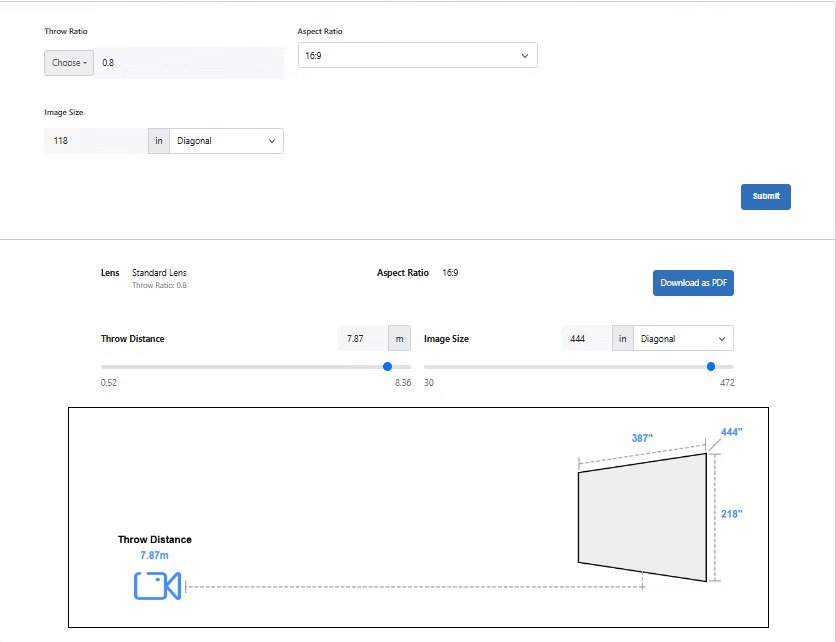In today’s world, sustainability has become a priority across every industry, and the AV sector is no exception. With the increasing demand for technology-driven spaces—conference rooms, classrooms, auditoriums, and entertainment venues—the environmental impact of audio-visual installations is becoming more significant. Designers, integrators, and manufacturers are now looking for innovative ways to reduce energy consumption, minimize waste, and promote long-term sustainability.
This is where AV System Design plays a crucial role. When approached thoughtfully, AV design can create systems that are not only high-performing but also environmentally responsible. Energy-efficient equipment, smart automation, and sustainable practices together form the backbone of modern green AV solutions.
In this blog, we will explore how sustainable AV design works, which practices and products make a difference, and how professionals can lead the shift toward greener technology.
The growing importance of sustainability in AV
As organizations around the world adopt corporate sustainability goals, the AV industry must align with these objectives. Traditional AV systems can consume significant amounts of power, especially when large displays, lighting, and sound equipment run continuously.
Moreover, electronic waste (e-waste) from outdated devices is another growing concern. Manufacturers frequently release new hardware versions, which leads to the disposal of old components that still function but no longer meet performance standards.
Green AV System Design aims to counter these challenges by focusing on long-term efficiency, modularity, and reduced resource consumption. The goal is not just to cut costs but to minimize the overall environmental footprint of technology installations.
Energy-efficient equipment choices
Energy efficiency starts with choosing the right equipment. AV designers and integrators can make a huge difference by selecting products that consume less power, generate less heat, and have longer operational lives.
1. Displays and projectors
Modern LED and laser-based display technologies are far more energy-efficient than older LCD or lamp-based systems. They use less electricity, produce less heat, and have a longer lifespan. Auto-dimming and power-saving modes help further reduce energy usage during idle times.
2. Audio amplifiers and speakers
Class-D amplifiers are a prime example of energy-efficient audio technology. They convert more of the input power into sound, reducing waste heat and power loss. Similarly, efficient speaker designs can deliver better sound at lower wattage, cutting overall system consumption.
3. Smart lighting systems
Lighting plays a big role in AV environments, especially in conference rooms and auditoriums. Integrating LED fixtures with automated controls, daylight sensors, and occupancy detectors ensures lights are only on when needed.
4. Networked AV devices
Network-based equipment allows centralized control, meaning unused devices can be powered down remotely. AV-over-IP systems reduce hardware redundancy by combining functions like video routing, control, and monitoring into a unified network infrastructure.
Sustainable design practices
Sustainability is not just about products—it’s also about how systems are designed and implemented. A green AV System Design approach includes several key strategies to improve efficiency and reduce waste.
1. Lifecycle planning
A sustainable system starts with long-term planning. Designers should consider the full lifecycle of each component—from manufacturing and installation to maintenance and disposal. Choosing modular, upgradable systems helps extend lifespan and reduce e-waste.
2. Efficient room layout and system scaling
Designers can optimize room layouts to minimize cabling, reduce power loads, and simplify operation. Right-sizing systems ensures that spaces are neither over-equipped nor underpowered, avoiding unnecessary resource use.
3. Automation and control systems
Automated control systems can significantly lower energy use. Features such as auto power-off, motion detection, and scheduling ensure that devices only operate when required. For example, displays can turn off when no one is in the room, or audio amplifiers can enter standby mode automatically.
4. Virtual collaboration and remote management
As hybrid work becomes more common, AV systems that support virtual collaboration can reduce travel-related carbon emissions. Additionally, cloud-based monitoring and remote support tools allow maintenance teams to troubleshoot issues without physical visits, cutting down transportation energy use.
Materials and manufacturing sustainability
The sustainability of an AV system also depends on the materials and production processes used by manufacturers. Companies that emphasize eco-friendly manufacturing methods, recyclable materials, and minimal packaging help reduce environmental impact.
AV professionals should partner with manufacturers who hold certifications like ENERGY STAR, EPEAT, or ISO 14001. These labels indicate adherence to strict sustainability standards.
Furthermore, using components made with recycled metals, eco-plastics, or low-emission production methods adds to the overall green value of the project.
Smart integration for energy savings
A major advantage of modern AV System Design is the ability to integrate with smart building management systems. This integration ensures energy use is automatically optimized across all connected technologies.
For instance:
- Room sensors can detect occupancy and adjust lighting, audio, and HVAC systems accordingly.
- Centralized scheduling can shut down or power up equipment based on meeting times.
- Analytics dashboards can track energy consumption trends and identify inefficiencies.
Such intelligent integration not only conserves energy but also improves operational efficiency. It enables facilities teams to monitor usage in real time and make data-driven decisions for sustainability.
The role of AV professionals in green design
Sustainability begins with awareness and commitment. AV designers, integrators, and consultants have the opportunity to drive change by prioritizing environmentally conscious solutions in their projects.
By educating clients about energy-efficient options and the long-term benefits of sustainable systems, professionals can help organizations make smarter investments. It’s not just about reducing operational costs—it’s also about demonstrating environmental responsibility.
AV teams can also adopt internal sustainability measures, such as using digital documentation instead of printed plans, reusing cables and racks, or recycling outdated equipment responsibly.
The business case for sustainable AV
While the initial investment in energy-efficient technology might seem higher, the long-term savings are substantial. Reduced power bills, fewer maintenance needs, and longer equipment lifespans all contribute to lower total cost of ownership. techners
In addition, companies that prioritize sustainability often benefit from incentives such as tax deductions, rebates, or recognition in green building certifications like LEED. These benefits make sustainable AV solutions not only good for the environment but also financially rewarding.
The future of sustainable AV design
The future of AV System Design lies in smart, data-driven sustainability. As AI and IoT continue to evolve, systems will become more self-optimizing—automatically adjusting energy use, monitoring device health, and predicting maintenance needs.
Manufacturers are also investing in sustainable research, developing components with minimal carbon footprints and higher recyclability. The next decade will likely see AV systems that are not only high-tech but also deeply aligned with global environmental goals.
Conclusion
Green and sustainable AV System Design is more than just a trend—it’s a responsibility. By focusing on energy-efficient equipment, smart automation, and eco-friendly practices, the AV industry can significantly reduce its environmental footprint while maintaining performance excellence.
From classrooms to corporate offices, the choices we make today shape the sustainability of tomorrow. With innovators like XTEN-AV leading the way in smart, efficient, and collaborative design tools, professionals now have the technology to create AV systems that are as responsible as they are powerful.
In 2025 and beyond, sustainability is not an option—it’s the new standard for forward-thinking AV design.
Read more: https://www.linkedin.com/pulse/av-system-design-software-vs-traditional-methods-which-singh-d1qce/











Leave a Reply